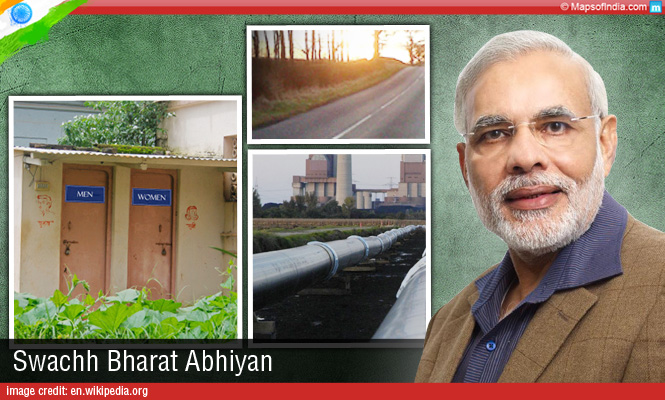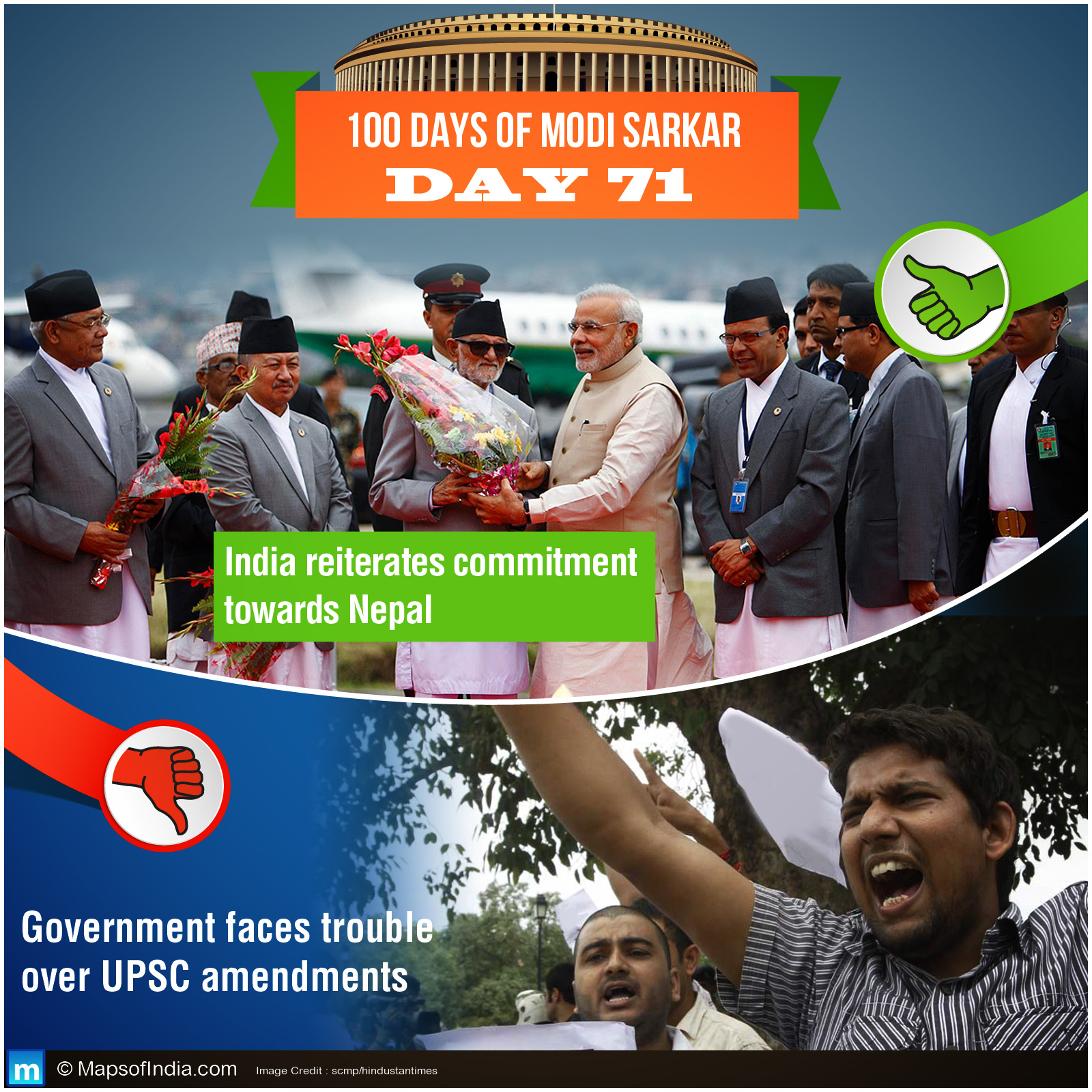Before independence, Our revered Father of the Nation, Mahatma Gandhi considered cleanliness as equal to devotion to God, he imparted the education of cleanliness to everyone, his dream was all about watching India as a clean and hygienic country. He used to wake up at 4:00 in the morning and clean himself. He had built his own toilet in Wardha Ashram, which he used to clean every morning and evening. To fulfill the dreams of Gandhi, PM Narendra Modi started the Swachh Bharat Abhiyan.
The former president Pranab Mukherjee, in his address to Parliament in June 2014, said, “For ensuring hygiene, waste management and sanitation across the nation a “Swachh Bharat Mission” will be launched.
First Cleanliness Drive Started on 25 September, 2014
A cleanliness drive, just before the formal launch of the Swachh Bharat Abhiyan, was carried out from September 25 till October 23 by all offices up to panchayat level. As a part of the awareness campaign, the Delhi Government also covered more than eight lakh ration card holders by sending sms to their mobile numbers.
Swachh Bharat Launched on 2 October, 2014
The Narendra Modi Government launched the “Swachh Bharat” movement to solve the sanitation problem and waste management in India by ensuring hygiene across the country. Emphasising on “Clean India” in his 2014 Independence day speech, PM Modi said that this movement is associated with the economic activity of the country. The prime objective of the mission was to create sanitation facilities for all. It aimed to provide every rural family with a toilet by 2019.
Objectives of Swachh Bharat Abhiyan
The objectives of the Swachh Bharat Abhiyan include the following:
- Construct individual, cluster and community toilets.
- Eliminate or reduce open defecation. Open defecation is one of the main causes of deaths of thousands of children each year.
- Construct latrines and work towards establishing an accountable mechanism of monitoring latrine use.
- Create Public awareness about the drawbacks of open defecation and promotion of latrine use.
- Recruit dedicated ground staff to bring about behavioural change and promotion of latrine use.
- Change people’s mindset towards proper sanitation use.
- Keep villages clean.
- Ensure solid and liquid waste management through gram panchayats.
- Lay water pipelines in all villages, ensuring water supply to all households.
What is Modi’s opinion?
Modi directly linked the Clean India movement with the economic health of the nation. This mission, according to him, contributed to the GDP growth, provided a source of employment and reduced health costs, thereby connecting to an economic activity.
Cleanliness is no doubt connected to the tourism and global interests of the country as a whole. It is time that India’s top 50 tourist destinations displayed highest standard of hygiene and cleanliness so as to change the global perception.
Clean India can bring in more tourists, thereby increasing the revenue. He appealed to the people to devote 100 hours every year to cleanliness. Not only the sanitation programme, Modi also laid emphasis on solid waste management and waste water management. Nitin Gadkari, Union Minister of Rural Development, Drinking Water & Sanitation, said that solid and liquid waste management activities using scientifically proven advanced techniques will be launched in each gram panchayat. Narendra Modi also directed that separate toilets for boys and girls should be provided in every school in the country by August 15, 2015.
Modi’s Nominees for Promoting the Swachh Bharat Abhiyan
On October 2, 2014, Modi nominated nine celebrities from various fields to propagate the mission, considering the new age marketing via social media. The nominated personalities included, Anil Ambani, Mridula Sinha, Baba Ramdev, Kamal Hassan, Priyanka Chopra, Sachin Tendulkar, Salman Khan, Shashi Tharoor and the team of the TV series Taarak Mehta Ka Ooltah Chashmah.
On 25 December, Modi nominated nine more people including the comedian Kapil Sharma, Sourav Ganguly, Kiran Bedi, Padmanabha Acharya, Nagaland Governor, Sonal Mansingh, Ramoji Rao of Eenadu group and Aroon Purie to take forward his “Swachh Bharat Abhiyan”. Some organisations such as the Institute of Chartered Accountants of India, India Today, Eenadu and the popular “dabbewale” of Mumbai were also nominated to be the torchbearers.
Funds Allocation
This project was expected to cost over Rs. 2 lakhs crore. Fund sharing between the Central and State Governments and Urban Local Bodies was allocated in the ratio of 75:25. It had been officially stated that for North Eastern and special category states, the allocation of funds is in the ratio of 90:10. To give a boost to the project, the government sought financial and technical support from the World Bank. Also, all big corporates and private organisations were asked to join the movement as part of their Corporate Social Responsibility (CSR) initiative.
Measures Proposed in 2015-16 Union Budget
Describing Clean India campaign as a “programme for preventive healthcare, and building awareness”, the Finance Minister Arun Jaitley proposed that the donations made to the Swachh Bharat Mission and the Clean Ganga Fund will be eligible for tax deductions under the Income Tax Act. The budget also proposed Swachh Bharat cess on select services at the rate of up to 2 per cent. The resources generated from this cess will be leveraged for funding initiatives towards the campaign.
Construction of 99.85 million Toilets till August 2019
According to government data, maximum funds were released to Uttar Pradesh (Rs 6592 crores) and Bihar (Rs 2943 crore) in 2018-19 through SBM-Gramin for building toilets under this dream project. This number is considered the highest since the launch launch of SBM in October 2014. Overall, the government claimed to have built 99.85 million individual toilets till August 2019. Moreover, 640 districts became Open Defecation Free (ODF) in the past 5 years.
The Pledge for All
PM Narendra Modi has urged each and every one of us to pledge the following as a part of the Swachh Bharat Abhiyan:
“I will remain committed towards cleanliness and devote time for this. I will devote 100 hours per year, that is two hours per week, to voluntarily work for cleanliness. I will neither litter not let others litter. I will initiate the quest for cleanliness with myself, my family, my locality, my village and my work place”.
Let’s Make Swachh Bharat Abhiyan a Success
The PM has rightly asserted that Swachh Bharat Abhiyan should be a combined effort of both the Government as well as the people. We hope that the Swachh Bharat Mission does not become another Nirmal Bharat Abhiyan started by the previous Government in 1999 with the same mission but was far from a success.
Swachh Bharat Abhiyan should not be a mere re-branding exercise. There is no doubt about the fact that change begins at home. Every citizen of the country should take it upon himself to make this campaign a success rather than waiting for the government to do. Let us also hope that we can change the attitude of the people towards hygiene and be the change we want to see.
Recent Developments
- The report for the cleanest cities has been released by the government. The survey conducted in the 4237 cities shows Indore to be the cleanest city in India. The state of Chhattisgarh followed by Jharkhand made it to the top of the table in state rankings.
- Rural India was declared open defecation free in October 2019. With this announcement, the Department of Drinking Water and Sanitation, which comes under the Ministry of Jal Shakti, meant that every family in the village has access to a toilet.According to the latest figures of the Swachh Bharat Mission, toilets have been prepared for 16 crore households in rural areas. According to the government, considering the number of members in a family to be five, about 84 crore people are using these toilets.
- In the last budget 2021-22, no separate fund was provided for the management of sewage disposal in the villages. However, later in August 2021, Rs 1.4 lakh crore was given to the local rural units as a joint fund for this work. Out of this, Rs 71.042 crore was earmarked for sanitation work including sewage and sludge management in villages by 2025-26. According to the Union Finance Ministry, this amount can be spent only under the Swachh Bharat Mission under the cleanliness project.
- Much needs to be done to treat the sewage sludge before it enters the water bodies. There is a definite need to pay attention to the Swachh Bharat Mission (Gramin) in the upcoming general budget, so that only that water which is purified comes in the drains, ponds and rivers.
- Cities and rural areas must be seen working together to reach the UN mandated Sustainable Development Goal for safe sanitation by 2030.
- Being a part of Community outreach and Swachh Bharat Abhiyan, a cleanliness drive was undertaken by the Indian Air Force personnel on 07 May, 22. The teams encouraged the local people to be a part of clean anf green india and also spread awareness about the importance of sanitation and cleanliness.





